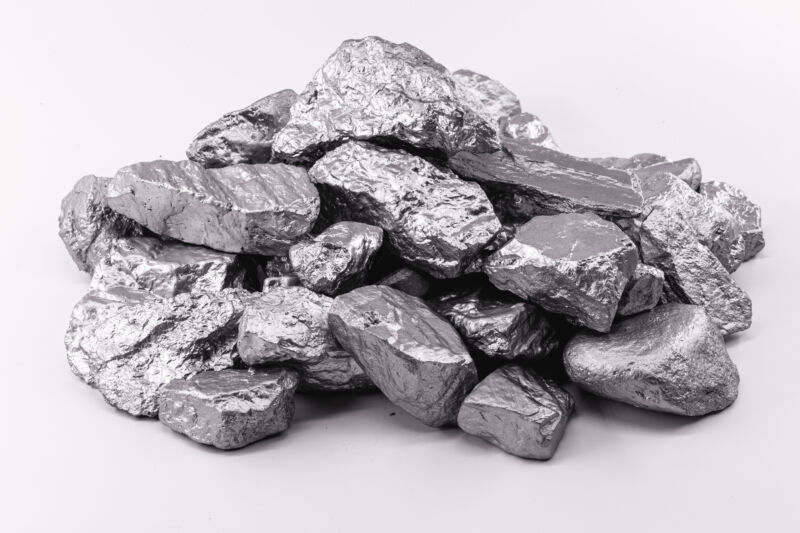
Enlarge / The much-larger-than-2D form of molybdenum disulfide. (credit: RHJ / Getty Images)
Atomically thin materials like graphene are single molecules in which all the chemical bonds are oriented so that the resulting molecule forms a sheet. These often have distinctive electronic properties that can potentially enable the production of electronics with incredibly small features only a couple of atoms thick. And there have been a number of examples of functional hardware being built from these two-dimensional materials.
But almost all the examples so far have used bespoke construction, sometimes involving researchers manipulating individual flakes of material by hand. So we're not at the point where we can mass-manufacture complicated electronics out of these materials. But a paper released today describes a method of doing wafer-scale production of transistors based on two-dimensional materials. And the resulting transistors perform more consistently than those made with more traditional manufacturing approaches.
Better manufacturing
Most of the efforts made toward easing the production of electronics based on atomically thin materials have involved integrating these materials into traditional semiconductor manufacturing techniques. That makes sense because these techniques allow us to perform incredibly fine-scale manipulations of materials at high volumes. Typically, this has meant that much of the metal wiring needed for the electronics is put in place by traditional manufacturing. The 2D material is then layered on top of the metal, and additional processing is done to form functional transistors.
Read 10 remaining paragraphs | Comments
